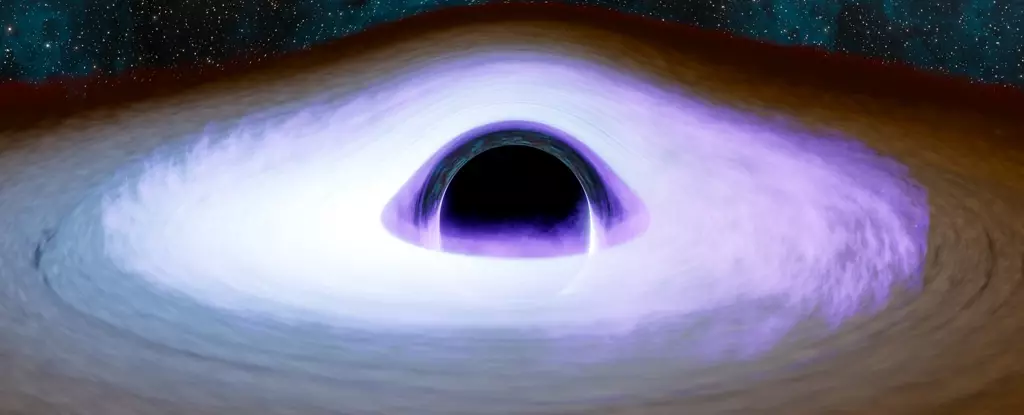The universe is a fascinating domain filled with celestial phenomena that stretch the boundaries of human understanding. Among these enigmas, black holes stand out not just for their daunting nature but for the elusive structures that surround them. The concept of a black hole’s corona—an enigmatic region similar to our Sun’s corona—has remained largely abstract until now. Recent advancements, particularly a groundbreaking study published in *The Astrophysical Journal*, provide fresh insights that could reshape our comprehension of black hole behavior and dynamics.
At its core, the notion of a black hole’s corona draws intriguing parallels to the Sun’s own corona. While the Sun’s halo of light, visible during a total solar eclipse, reaches temperatures of millions of degrees, research suggests that the corona surrounding active black holes could reach temperatures in the billions. This phenomenon occurs within an incredibly thin environment, akin to a vacuum, which complicates observational efforts. The study in question utilizes high-energy X-ray emissions to penetrate through the shroud of gas and dust that envelops many black holes, allowing scientists to gather crucial information about these hot regions.
Typically, black holes are visualized as being encased in a toroidal structure composed of gas and dust, encircled by an accretion disk made up of superheated material. Driven by gravitational forces, this disk gradually spirals into the black hole. However, distinguishing between this accretion disk and the equally mysterious corona has proven challenging, particularly in obscured black holes where visibility is hindered by the torus blocking our line of sight.
Innovative Methods in X-ray Observation
In their recent observations, the research team drew inspiration from the way astronomers can observe the solar corona during an eclipse. Much like the Sun’s corona is revealed against the darkened disk during an eclipse, the scientists leveraged high-energy X-rays emanating from the black hole’s corona. These X-rays can scatter off the surrounding material in the torus, creating a pathway for indirect observations. Using NASA’s Imaging X-ray Polarimetry Explorer (IPXE), the team successfully detected scattered X-rays from a dozen obscured black holes, shedding light on their coronas.
Among the black holes studied were notable examples such as Cygnus X-1 and X-3 in our Milky Way galaxy, alongside LMG X-1 and X-3 found in the Large Magellanic Cloud. This observational strategy has proven not only effective in revealing the otherwise shrouded coronae but has also uncovered patterns among the observed black holes, suggesting a disk-like structure around these gravitational giants instead of a more spherical formation akin to that of the Sun.
The implications of this study extend far beyond our immediate understanding of black holes. By refining our models of black hole dynamics, astronomers can better comprehend how black holes consume surrounding matter. This phenomenon, in turn, plays a pivotal role in powering active galactic nuclei (AGNs), some of the universe’s most luminous and distant objects.
Furthermore, understanding the structure and behavior of black hole coronae enhances our grasp of galactic evolution. It could provide valuable clues about the lifecycles of galaxies, as the activities occurring around supermassive black holes likely influence star formation rates and the distribution of matter in their host galaxies.
Envisioning Future Research Directions
As research techniques continue to evolve, the study of black hole coronae offers exciting avenues for future exploration. Increased sophistication in observational technology may lead to further discoveries, unlocking secrets concealed within these gravitational wells. The correlations between black hole activity and cosmic phenomena will be paramount as scientists strive to piece together the grand tapestry of our cosmos.
This recent study culminates as a significant stride toward demystifying the corona surrounding black holes. Through innovative observational techniques and collaborations, the quest to comprehend these enigmatic structures is poised to usher in an era of greater enlightenment in astrophysics. As we stand on the threshold of new astronomical revelations, one thing remains certain—the universe has much more to unveil, and uncovering the intricacies of black holes is just the beginning.



Leave a Reply